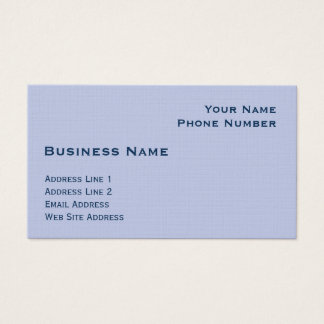When conducted thoroughly, a SWOT analysis can uncover a wealth of information and can be useful in a number of situations.
This article will walk you through how to conduct a SWOT analysis and provide some tips that will help you use the tool effectively.
Using a SWOT Analysis Matrix
A SWOT matrix is usually depicted as a square divided into four quadrants. Each quadrant represents one element of the SWOT analysis -- Strengths, Weaknesses, Opportunities, Threats.
Questions to Ask During the Process
The easiest way to start filling in each quadrant in the matrix above is by answering a series of questions. Use the list below to get started, focusing on the questions that are most relevant to your business and current situation.
Strengths: For this quadrant, think about the attributes of yourself and your business that will help you achieve your objective. Questions to consider:
- What do you do well?
- What are your unique skills?
- What expert or specialized knowledge do you have?
- What experience do you have?
- What do you do better than your competitors?
Where are you most profitable in your business?
Weaknesses: For this quadrant, think about the attributes of yourself and your business that could hurt your progress in achieving your objective. Questions to consider:
- In what areas do you need to improve?
- What resources do you lack?
- What parts of your business are not very profitable?
Where do you need further education and/or experience?
What costs you time and/or money?
Opportunities: For this quadrant, think about the external conditions that will help you achieve your objective. Questions to consider:
- What are the business goals you are currently working towards?
- How can you do more with your existing customers or clients?
- How can you use technology to enhance your business?
- Are there new target audiences you have the potential to reach?
- Are there related products and services that provide an opportunity for your business?
Threats: For this quadrant, think about the external conditions that could damage your business's performance. Questions to consider:
- What obstacles do you face?
- What are the strengths of your biggest competitors?
- What are your competitors doing that you're not?
- What's going on in the economy?
- What's going on in the industry?
- Using Data Compiled in a SWOT Analysis
One of the most important parts of your SWOT analysis is using the data you compiled to identify new strategies and goals for your business. For example, you can:
- Create a plan to build up your strengths even more
- List ways you can work on building up your weaknesses
- Set SMART goals for each of the opportunities you identified
Devise a plan to use your strengths to decrease the threats you identified
Then, look for ways to combine data from different quadrants in even more ways:
Explore how you can combine your strengths and opportunities to develop new strategies
Try combining strengths and threats to identify threats you can eliminate
Look at your weaknesses and opportunities to create a list of areas ready for improvement
Make a list of areas to avoid that fall under weaknesses and threats
Once you understand how to compile your SWOT data and find ways to use it strategically, the SWOT analysis will be a tool that you can use over and over in your business to explore new opportunities and improve your decision-making process.
15% Off All Business Cards
VIEW ALL CARDS
$60.05
$60.05
$60.05
$62.55
$60.05
$60.05
$60.05
$60.05
$52.55
$52.55
$60.05
$60.05












No comments:
Post a Comment